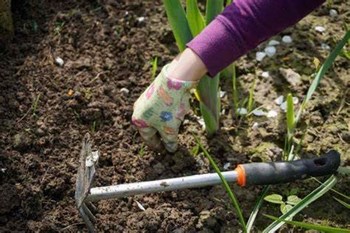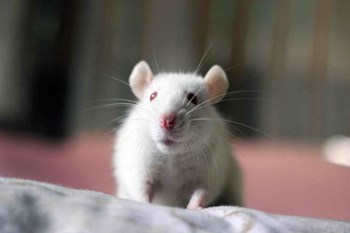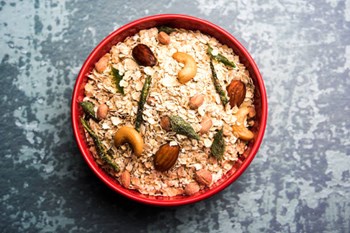


1995 മുതൽ സുഗന്ധവിള ബോർഡ് [ Spices Board] നടത്തിയ നിരീക്ഷണങ്ങളിലൂടെ വർഗ്ഗീസ് പറയുന്ന കാര്യങ്ങൾ ശരിയാണെന്ന് കാണുകയും, 2007 ൽ കാർഷിക മികവിനുള്ള രാഷ്ട്രപതിയുടെ അവാർഡും നാഷണൽ ഇന്നോവേറ്റീവ് ഫൗണ്ടേഷന്റെ ആദരവും വർഗ്ഗീസിനെ തേടിയെത്തി. കുമ്പുക്കൽ കുരുമുളകിനെ അംഗീകരിച്ച് നാഷണൽ രജിസ്റ്ററിൽ ചേർക്കുകയും ചെയ്തിട്ടുണ്ട്.
“ജനിതക ശസ്ത്രത്തിന് മുതൽകൂട്ടായ കണ്ടുപിടുത്തം ” എന്ന് മുൻ രാഷ്ട്രപതി ഡോ: എ.പി.ജെ.അബ്ദുൾ കലാം വിശേഷിപ്പിച്ച കുമ്പുക്കൽ കുരുമുളകിനെ കുറിച്ച് പഠിക്കാൻ ജർമ്മനി പോലുള്ള രാജ്യങ്ങളിൽ നിന്നു വരെ ശാസ്ത്രജ്ഞന്മാരെത്തി.
ദ്രുതവാട്ടത്തിനെയും പൊള്ളുരോഗത്തെയും പ്രതിരോധിക്കുന്നതാണ് കുമ്പുക്കൽ കുരുമുളക് .
കൂടുതൽ ശിഖരങ്ങൾ പെട്ടെന്ന് പൊട്ടിമുളക്കുന്നതുകൊണ്ട് കൊടി താങ്ങുമരത്തിന്മേൽ അതിവേഗം പടർന്നു വളരുന്നു .
കുമ്പുക്കൽ കുരുമുളക് നട്ട് ഒന്നാം വർഷം മുതൽ കായ്ച്ചു തുടങ്ങുകയും മൂന്നാം വർഷം കൊടി അതിൻ്റെ പൂർണ്ണ ആദായത്തിൽ എത്തുകയും ചെയ്യും .
ഒരു ചെടിയിൽ നിന്ന് അഞ്ചു കിലോവരെ ഉണക്ക കുരുമുളക് ലഭിക്കും .
കട്ടിയുള്ളതും കടുത്ത പച്ചനിറമുള്ള ഇലകളും കുമ്പുക്കൽ കുരുമുളകിൻ്റെ എടുത്തുപറയത്തക്ക പ്രേത്യേകതകൾ ആണ് .
കുമ്പുക്കൽ കുരുമുളകിൻ്റെ മികച്ച തൈലാംശം ശാസ്ത്രീയമായി പരീക്ഷിച്ചു തെളിയിച്ചതാണ് .
കേരളത്തിലെ കാലാവസ്ഥയ്ക്ക് അത്യുത്തമമാണ് കുമ്പുക്കൽ കുരുമുളക് .
കുമ്പുക്കൽ കുരുമുളകിന് കെ.ടി.വർഗ്ഗീസ് പേറ്റന്റ് എടുത്തിട്ടുണ്ട്.
ഇന്ന് ഇതിൻറെ വിപുലമായ നഴ്സറിയും വൻ ശേഖരവും അദ്ദേഹത്തിന് കൈമുതലായുണ്ട്. കേരളത്തിനകത്തും പുറത്തും അദ്ദേഹത്തിൻറെ കുരുമുളകിന് ആവശ്യക്കാർ അനവധിയാണ്.
ലിജോ ഇടുക്കി
Ph: 9400588275
അനുബന്ധ വാർത്തകൾക്ക് അയൂബിൻ്റെ പരീക്ഷണം വിജയിച്ചു; ഇനി കുരുമുളക് കൃഷിയില് വിയറ്റ്നാം മാതൃക
Background
K.T. Varghese (51 years), an innovative farmer from Cheruvalikulam, has developed a disease resistant variety of pepper, which has stable yield, high oil content and pungency than the local varieties.Lacking basic facilities like primary health center, road infrastructure, Cheruvalikulam is one of least developed areas of Idukki District. Chief crops grown by the people, who are basically farmers, are rubber, vanilla, pepper and clove. His father, also an agriculturist grew rubber as the main crop with some pepper on the ten acres of land he had.For the last one year, K.T. Varghese is working as an estate manager in a private spice estate. His son looks after the four acres of land he owns where along with rubber and pepper now vanilla and clove are also being grown.As a child he was very much interested in sports especially basketball and represented his school in several tournaments. He failed to pass his tenth standard examination and faced many problems during his education since his school was 15 kms away from his house.He used to work with his father and brother till 1984. With a view to become independent after his marriage, he started his own farming in 1985 on four acres of land that he got from his father cultivating tapioca, ginger and pepper. He planted local pepper varieties like Karimunda, Arrayamunda, Peringudi, Tiplimundi and Panniyur.
Genesis
In 1989 he had severe incidence of quick wilt in his pepper crop and to his surprise only five- eight plants could survive the incidence. His wife advised him to propagate the remaining plants through vegetative propagation (buds), to which he consented. Along with them, he cultivated the fresh seeds of Karimunda variety also.This was successfully done till 1995, then again there was an attack of quick wilt in the entire Idukki district. All his plants were lost excepting the ones, which were the progeny of the previous quick wilt survivors. After this episode he again repeated the process of propagation and increased his yield substantially over the years.In 2001, after the visit of an officer from the Spices Board, a paper on his variety got published in the magazine, Spice India, which gave him much recognition and he got a good demand for his variety in 2002. Anticipating a good demand in 2003, he prepared around one lakh vegetative propagules for sale but that year the demand shifted from pepper to vanilla so not even half of them got sold.During the past fifteen years or so, K.T. Varghese has suffered huge financial losses because of loosing entire crops to wilt twice. Pepper in a way has been quite unreliable for him. His son has also not been able to get a job in spite of having an ITI diploma so in order to make up for the losses he had to take up the job of estate manager elsewhere.
Innovation
Shri Varghese is using this variety after isolating and stabilizing the plantlets post 1995 wilt and since then the yield performance of the variety has been higher and stable compared to other locally popular varieties. One kilogram of green pepper on drying yields 300 grams of dried pepper fetching ten percent higher price due to the high pungency and oil content. The variety has a highly developed root system making it resistant against quick wilt and foot rot, and can also be grown in stony areas having less soil depth.Spices Board has published about the pepper variety developed by innovator in the ?Journal of Spice India?.The farmer had started diffusing the variety locally and a large number of farmers have started evincing interest in cultivation. Presently it has diffused in Malabar, Kozhikhode, Ernakulum, Punmudi, Trivandrum and parts of Karnataka and Tamil Nadu. The media has played a large role in disseminating the merits of the variety.Though he is in job presently but K. T. Varghese?s heart is in his plantation. He mentions that he would love to come back to work on his farm provided he gets some financial support to start his nursery.His message to fellow agriculturists is that they should not keep on switching over from one crop to another based on market demand because then they would not be able to derive maximum from the crop in the long run.

























Share your comments